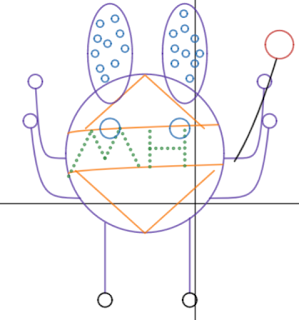I can't say that I have necessarily missed my classroom during all of this. There are no windows, the desks are hard to group, it's crowded. My makeshift desk at home has a window next to it, a furry co-worker, ample bathroom breaks and time to eat vs. inhaling my food at lunch duty.
 |
| My makeshift desk, complete with my fav candle, cold brew coffee, and my airpods #essentials |
But what I miss (and what most of us miss) is the conversations. While filling out my end of the year reflection evaluation, I had a hard time deciding what to put. My goal for this year was to encourage conversation among my students and teach them how to work together in groups and explain their thinking. I wanted to dive deeper into the #ThinkingClassroom model. I finally got my AP on board to see what I was trying to do.
Some of my students working in #VRG earlier in the semester on our #vnps
Then COVID happened.
It isn't feasible to expect our students to complete synchronous learning. They have far too many responsibilities outside of school, and there was no way to make that equitable. I had to say goodbye to my goals for the year.
However, I tried to focus on things I could do better now that I had more time to work with students. We were only posting 2 assignments per week, so I could give in-depth feedback to students and help them edit their work multiple times. I couldn't have verbal conversations with most of them, but I could check in with them using the Desmos screen starters. I learned a lot more about some of my students during this time than I would have if we were in the classroom. But I was also frustrated by the students that I could not reach (and I had to remind myself it was not personal).
The best part of distance learning was getting to end my school year with the Desmos Art Project. I took advice from @MrCorleyMath and kept my directions simple. His blog was a huge help for me. Some of the kids rushed through it, some copied from existing projects online. But some kids went above and beyond what I expected from them. The overall reflection was that it was challenging, but it was fun. One student told me that her whole family was excited to see her end product and that they had never seen a project like this before. See a few of my favorite examples below!
I ended our semester by sending a sappy email to them that I know about 1/3 of them will read. I don't care. I want them to know that I appreciate each of them, that I see them, and that I'm here for them, even over the summer. I included at the end that I hope each of them learned to like math even a little bit more than they did before they came into my class. And while I probably won't hear back from most of them, I like to think maybe some of them see the beauty and fun in math a little bit more.














Comments
Post a Comment